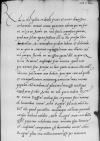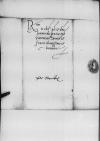List #1964
Piotr GAMRAT do Ioannes DANTISCUSCracow (Kraków), 1538-11-03
| odebrano [1538]-11-15 Rękopiśmienne podstawy źródłowe:
| ||||
Tekst + aparat krytyczny + komentarz Zwykły tekst Tekst + komentarz Tekst + aparat krytyczny
Reverendissimo in Christo Patri et Domino
Reverendissime in Christo Pater et Domine, frater et amice carissime et honoran(dissime) or honoran(de)⌈honoran(dissime)honoran(dissime) or honoran(de)⌉ .
Donati causa quantum adiuta per me fuerit, vel ex eo Reverendissima Dominatio Vestra facile cognoscere poterit, quod mea solius opera factum est, ut ille prorsus liber dimitteretur. Ac contendam quidem libens et elaborabo, ut ne quis in
Quod vero scribit Reverendissima Dominatio Vestra queri itidem illistrissimum dominum  BCz, 1597, p. 230 ablata multosque insontes necatos. Atque ea magna ex parte facta esse opera praefecti Nydburgensis.
BCz, 1597, p. 230 ablata multosque insontes necatos. Atque ea magna ex parte facta esse opera praefecti Nydburgensis.
Opto Reverendissimam Dominationem Vestram diu esse incolumem. Cuius me fraternae benevolentiae commendo.
Dat(ae) or Dat(um)⌈Dat(ae)Dat(ae) or Dat(um)⌉
Vestrae Dominationis Reverendissimae obsequens frater


